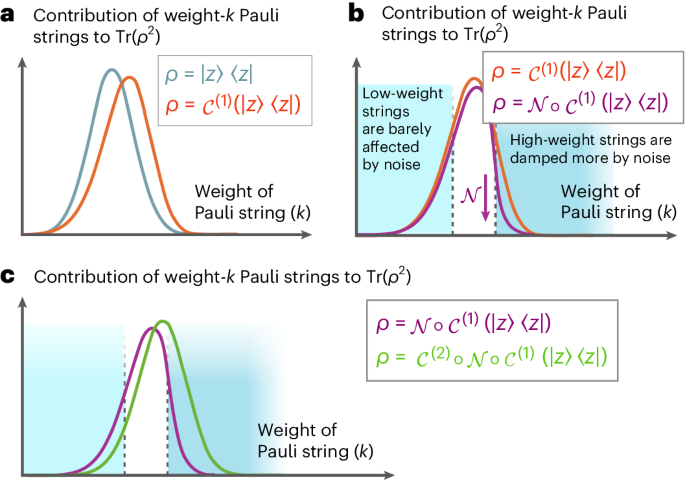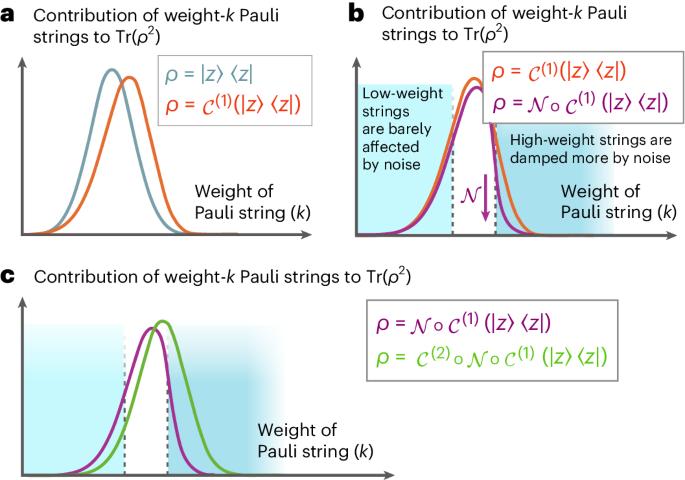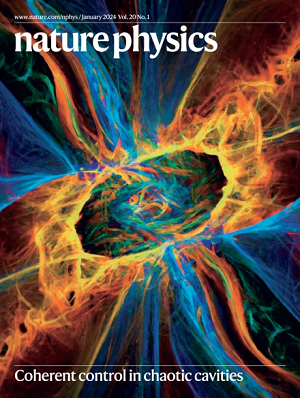Exponentially tighter bounds on limitations of quantum error mitigation
IF 17.6
1区 物理与天体物理
Q1 PHYSICS, MULTIDISCIPLINARY
引用次数: 0
Abstract
Quantum error mitigation has been proposed as a means to combat unwanted and unavoidable errors in near-term quantum computing without the heavy resource overheads required by fault-tolerant schemes. Recently, error mitigation has been successfully applied to reduce noise in near-term applications. In this work, however, we identify strong limitations to the degree to which quantum noise can be effectively ‘undone’ for larger system sizes. Our framework rigorously captures large classes of error-mitigation schemes in use today. By relating error mitigation to a statistical inference problem, we show that even at shallow circuit depths comparable to those of current experiments, a superpolynomial number of samples is needed in the worst case to estimate the expectation values of noiseless observables, the principal task of error mitigation. Notably, our construction implies that scrambling due to noise can kick in at exponentially smaller depths than previously thought. Noise also impacts other near-term applications by constraining kernel estimation in quantum machine learning, causing an earlier emergence of noise-induced barren plateaus in variational quantum algorithms and ruling out exponential quantum speed-ups in estimating expectation values in the presence of noise or preparing the ground state of a Hamiltonian. Error mitigation has helped improve the performance of current quantum computing devices. Now, a mathematical analysis of the technique suggests its benefits may not extend to larger systems.


量子误差缓解限制的指数紧缩约束
量子误差缓解已被提出作为一种手段,用于消除近期量子计算中不需要的和不可避免的误差,而不需要容错方案所需的大量资源开销。最近,误差缓解已成功应用于减少近期应用中的噪声。然而,在这项工作中,我们发现量子噪声在较大系统规模下有效 "消除 "的程度受到很大限制。我们的框架严格捕捉了当今使用的大量误差缓解方案。通过将误差缓解与统计推断问题联系起来,我们证明了即使在与当前实验相当的浅层电路深度下,在最坏的情况下也需要超对数的样本数来估计无噪声观测值的期望值,而这正是误差缓解的主要任务。值得注意的是,我们的构造意味着,噪声引起的扰动可以在比以前想象的更小的深度以指数形式出现。噪声还会影响其他近期应用,如限制量子机器学习中的内核估计,导致变分量子算法中更早出现噪声引起的贫瘠高原,以及排除在存在噪声或准备哈密尔顿基态时估计期望值的指数量子加速。
本文章由计算机程序翻译,如有差异,请以英文原文为准。
求助全文
约1分钟内获得全文
求助全文
来源期刊

Nature Physics
物理-物理:综合
CiteScore
30.40
自引率
2.00%
发文量
349
审稿时长
4-8 weeks
期刊介绍:
Nature Physics is dedicated to publishing top-tier original research in physics with a fair and rigorous review process. It provides high visibility and access to a broad readership, maintaining high standards in copy editing and production, ensuring rapid publication, and maintaining independence from academic societies and other vested interests.
The journal presents two main research paper formats: Letters and Articles. Alongside primary research, Nature Physics serves as a central source for valuable information within the physics community through Review Articles, News & Views, Research Highlights covering crucial developments across the physics literature, Commentaries, Book Reviews, and Correspondence.
 求助内容:
求助内容: 应助结果提醒方式:
应助结果提醒方式:


